Disclaimer: This article is for entertainment purposes only. I'm not a doctor nor pretend to be one, so please do not qualify this as medical advice. This article’s content is not intended to substitute professional medical advice, diagnosis, or treatment.
For the past 28 days, I’ve had a tiny needle stuck in the back of my arm, reading my blood. And no, I’m not diabetic nor pre-diabetic. I wore a continuous glucose monitor (CGM) as part of a challenge partnered with Levels Health because I used to suffer from spells of hypoglycemia (blood sugar dropping below 70 mg/dL) as a child.
When my glucose levels dropped too low, I’d experience cold sweats, lightheadedness, trembling hands, and an elevated heart rate due to my body releasing epinephrine (adrenaline) to stabilize my blood glucose.
Experiencing low blood sugar made it difficult for me to focus while at school and was quite frankly a scary experience for someone who didn’t understand what was going on.
Over the years, through trial and error, I realized that eating cereal for breakfast always caused my blood sugar to crash. Eventually, I switched to eating eggs, bacon, and fruit (berries or avocado) for breakfast and never experienced low blood sugar again.
At the time, I didn’t understand why the switch worked, but I understood that eating only simple carbs for breakfast wasn’t good for me. I now understand that my body was experiencing reactive hypoglycemia or exaggerated insulin response due to repeated glucose spikes followed by precipitous drops. Over time, this could have led to a host of chronic diseases such as heart disease, Alzheimer’s, asthma, cancer, and diabetes.
Since then, I’ve become fascinated with maintaining a healthy lifestyle and finding ways to improve my metabolic fitness. My curiosity for always looking for ways to optimize my diet eventually led me to wear a CGM for a 28-day challenge.
But before I explain the details of the challenge, let’s first define metabolic fitness.
What’s Metabolic Fitness?
According to Levels, “Metabolic fitness is a term to describe where we fall on the spectrum of metabolic health and how well we are generating and processing energy in the body.”
It’s called fitness because you can control and improve it through your diet and lifestyle choices. Signs that you’re metabolically fit would include having sustained energy levels, a healthy body weight, and a lowered risk of chronic disease.
Specifically, you’re metabolically fit when you experience a minimal rise in glucose levels after meals and a return to your baseline soon afterward. You also maintain a healthy range of glucose levels throughout the day (see chart).
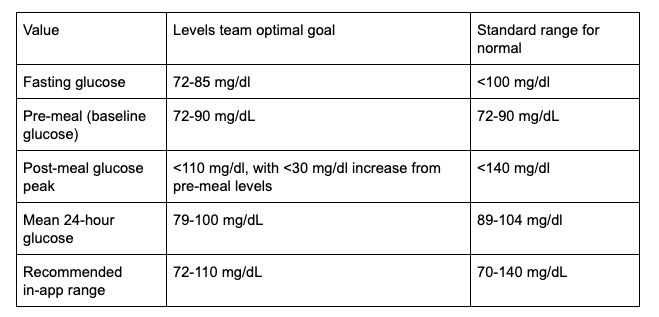
Similar to tracking your body weight using a scale to provide insight into your general fitness, you can track your glucose with a CGM to provide useful insight into your metabolic fitness.
But unlike a scale, which measures your body weight without any context of past choices, the insights from reading your blood glucose provide immediate feedback on which foods and lifestyle choices are accelerating—or crippling—your metabolic progress. In other words, measuring your glucose is a better metric for gauging just how healthy you are.
What’s Glucose?
Glucose is a simple sugar that is a product of the carbohydrates you eat. When glucose enters your bloodstream, your pancreas receives a signal to release insulin, a hormone that alerts your cells to absorb the glucose. Any excess glucose that isn’t absorbed by your cells is either stored in your muscles and liver as glycogen or converted into triglycerides and stored as body fat.
So if you enjoy binging on Krispy Kreme doughnuts, Starbucks Vanilla Frappuccinos, and a burger and fries too often, you could end up over-taxing your pancreas, making it less effective at releasing insulin. Over time, this can lead to pre-diabetes or even type-2 diabetes.
The Challenge
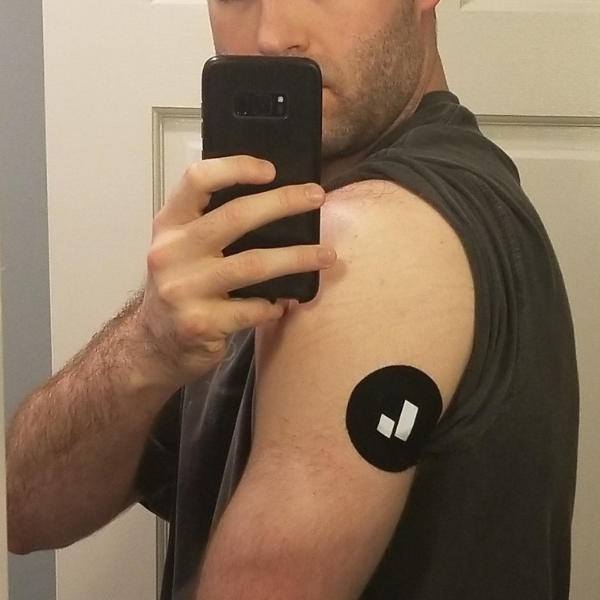
The Wearable Challenge is a 28-day weight-loss accountability challenge where you put money on the line and wear a Levels CGM to track blood glucose levels. The challenge requires you to keep your glucose levels below 120 mg/dL. Every day you go over, you lose $25 (talk about having skin in the game). The challenge starts with a three-day grace period, so you can experiment with your diet to see how it impacts your glucose without getting penalized.
So why stay below 120 mg/dL?
According to the International Diabetes Federation (IDF) guidelines, your glucose values are considered “normal” if they stay below 140 mg/dL after meals and return to pre-meal levels within 2–3 hours. Since this is a challenge geared towards weight loss, the upper limit is set a bit lower.
What I Learned
Even though it’s advertised as a weight-loss challenge, I enrolled to learn more about how my body responds to my diet and lifestyle (although I did manage to lose eight pounds!) Overall, it was a great learning experience filled with joyous moments of self-confirmation, utter disappointment, and quite a few surprises in between.
For reference, each meal in the Levels app is scored on a range from 0-10, with 10 being optimal. According to their app:
"The score is a composite of glucose rise from baseline, height of the glucose peak, and recovery time back to baseline, all of which are associated with metabolic health."
The Good
The best news was discovering that my typical breakfast of three eggs, bacon, and half an avocado drizzled in olive oil and my afternoon snack choice of raw almonds both caused almost no glycemic response. The Levels app showed that these foods consistently hit a perfect score. Since I eat these foods most often, it was nice knowing that I had a strong foundation.
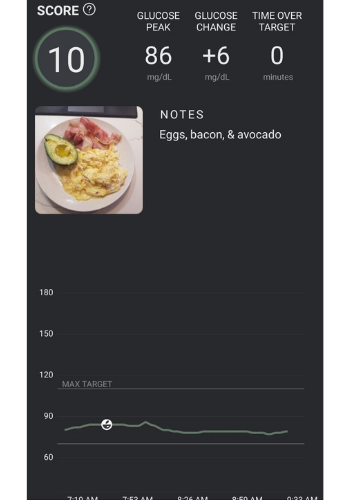
The challenge also confirmed my belief that eating a low-carb paleo/keto-inspired diet consisting of mostly meat, vegetables, and healthy fats (olive oil, coconut oil, and butter/ghee) is optimal for maintaining consistent glucose levels.
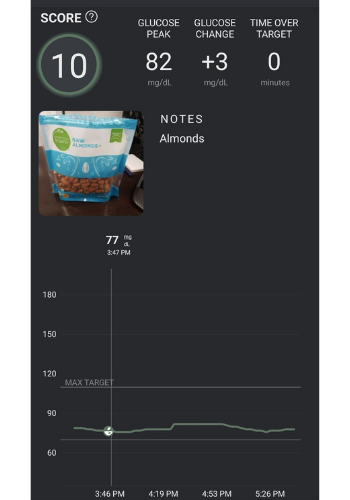
Over the past four years, I’ve made a conscious effort to cook meals that avoid simple carbs, vegetable oils, and sweeteners, and this challenge further confirmed that I should continue with this type of diet.
The Not-So-Good
The foods that had the largest impact on my blood sugar that I was least surprised about were white rice and craft beer. Unfortunately, I love both of these things (so long Chipotle burrito bowls). It was disappointing to finally have to stare the truth in the face instead of continuing to live in the dark of willful ignorance.
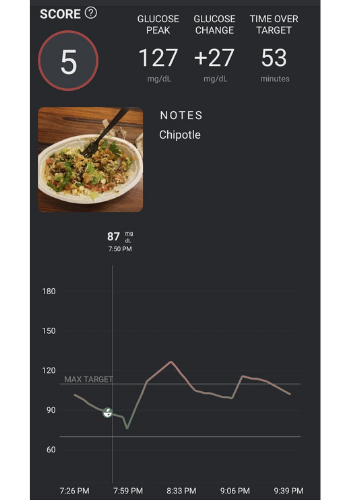
I was also disappointed to learn how much sweet potato spikes my blood sugar. I knew sweet potatoes had a lower glycemic index (GI) score than regular potatoes, but they still pushed me over the limit when eaten with other vegetables. I still plan to keep them in my diet but will be more conscious about how often I eat them moving forward.
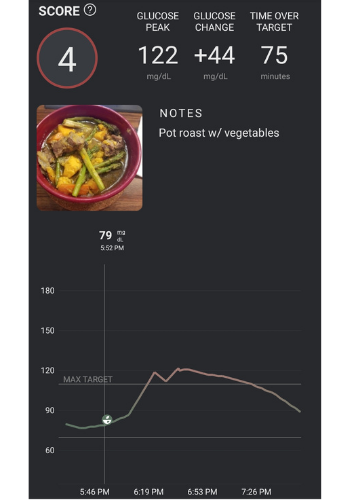
The Surprising
The biggest surprise of the challenge was discovering that quality tequila (G4 reposado, if you’re curious) had almost no effect on my blood sugar. My guess is because quality tequila has zero carbs (whereas an average beer has around 13g of carbs). Since beer is my usual go-to if I want a drink, it’s nice to learn that tequila makes for a healthier substitute.
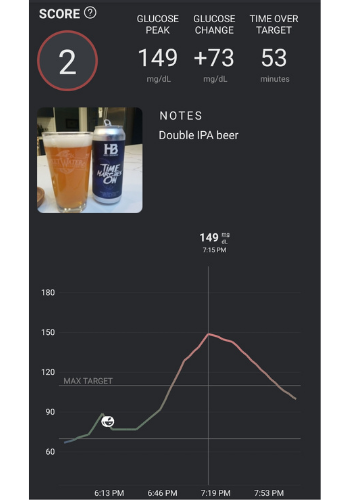
But I need to be careful here. Just because I didn’t experience a spike in glucose doesn’t mean I didn’t have a biological response. According to a study performed by the American Journal of Clinical Nutrition, it’s believed that alcohol decreases your liver’s ability to make new glucose, so it can trigger hypoglycemia, especially if you’re fasting or in a ketogenic state.
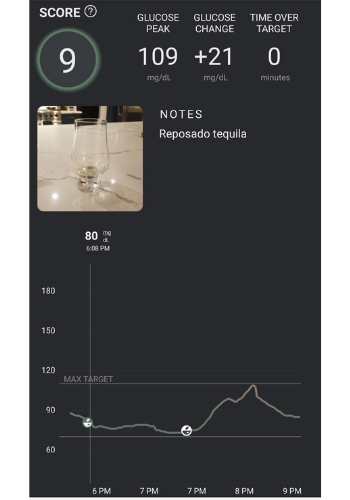
Another big surprise was discovering that my glucose levels aren’t just impacted by what I eat, but also when I eat. I repeatedly confirmed this discovery because I meal prep twice per week to save time by eating the same meal multiple days in a row. You may find that gross; I find it efficient.
Eating the same meal for lunch and dinner for multiple days of the challenge was great for understanding how my body responds to food at different times of the day. All else being equal, my glucose spikes more after dinner than it does for lunch, and sometimes as much as 20mg/dL!
Even more surprising was noticing how little change there was from eating the same meal from day to day, but then having a large variance between lunch and dinner. I’m sure there’s a reason why, but I can’t seem to find a convincing explanation.
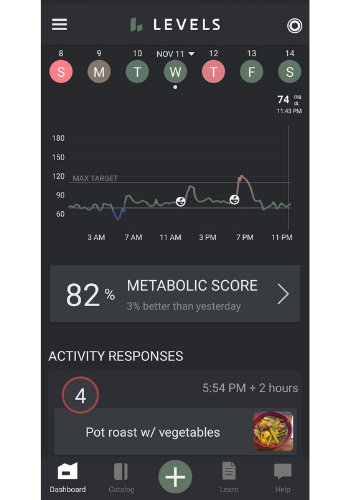
Why I Believe this is the Future of Healthcare
My initial approach to better understanding my health was to go in for an annual physical to see if my biomarkers were trending in the right direction. Every year I would get my blood work results back, then receive some generic advice from my doctor about how I need to watch my cholesterol and maybe not eat so many eggs.
While I still think it’s important for everyone to get an annual physical, your bloodwork results are only useful for showing you the direction your health is headed, not what got you there. In other words, your annual (or multi-year) blood test results are lagging indicators of the culmination of choices you’ve made since your last visit. While still useful to know, it leaves a lot open for interpretation.
Unlike an annual physical, tracking your glucose with a CGM provides real-time feedback about how your diet and lifestyle choices directly affect your health. Instead of playing the guessing game, the data from your CGM gives you the agency to make educated choices about what you should and shouldn’t be eating.
While I don’t want to conflate stable glucose levels with perfect health, your glucose is the ideal biomarker to track because it can be self-monitored every day with a CGM. It lets you be proactive with your health by giving you the ability to observe, decide, and act towards making healthier choices.
Learn More
If you’re interested in learning more about how your body reacts to your diet and lifestyle, I recommend checking out Levels Health. You can sign up for their waitlist to try their product, or if you want to try it sooner, you can check out the 28-day Wearable Challenge. The application is easy to fill out, and they have challenges already scheduled for January, February, and March of next year.
Also, if you’ve already done the Wearable Challenge or were one of the lucky few who got early access to Levels, I’d love to hear about your experience! Feel free to send me an email or DM on Twitter. I’m always curious to learn how certain foods affect people differently and what changes they made to improve their metabolic fitness.
Thanks to Stew Fortier, Sara Campbell, Drew Stegmaier, Ryan Williams, Jamie Russo, Noah Maier, David Vargas, Alexander Hugh Sam, Richie Bonilla, and Compound Writing for reading drafts of this essay and providing thoughtful feedback.

